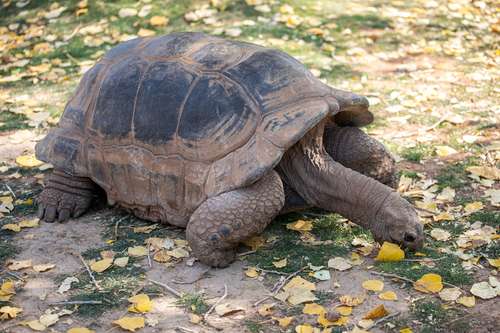Flying hippos might seem like a far fetched fairytale but a groundbreaking study has discovered new insights that may suggest otherwise.
Hippos are warm-blooded, aggressive large mammals that spend most of their time underwater. They don’t swim, but because of their dense bones, they have great buoyancy and glide off with their legs which makes them graceful with surprising agility and speed underwater. When they need air, they reach the surface, with nostrils out of the water then dive right back in.
Since they have sensitive skin, they spend the daytime underwater but travel at night on land to find grass to feast on. As such, many wildlife enthusiasts find it difficult to study these animals due to limited access—navigating at nighttime and the threat they pose to onlookers and other animals within their territory.
Emily Pringle, a wildlife enthusiast and former undergraduate student at the Royal Veterinary College with a go-ahead from seasoned professor and expert in biomechanics, John Hutchinson secured a location in North Yorkshire that trumped the earlier limitations with greater accessibility and capacity for undisturbed human supervision.
The hippos have enough room to themselves in Flamingo land resort so Emily made a video of the animals as they ate, drank from their waterbed, and socialized. As the researchers later studied the videos made, they looked intently to find out if at any point, the animals had all of their limbs off the ground.
Hippos have less resistance on land than on water so they move faster especially when running and can cover as much as 3-19 mph undisturbed. They always seem to be in a hurry, trotting away whether on land or in water. They have a specific gait similar to that of other large land animals. They walk with their diagonal feet in sync-- [front left x rear right, followed by the front right x rear left]. This simple, yet coordinated walking style can help them lift all four feet off the ground while they run, becoming ‘airborne’ as they dash off.
Other similarly huge land animals have a walking gait that doesn’t change while they’re running at high speeds unlike ‘flying hippos’ that can perform a wider range of movement; trot, walk, and gallop. Further analysis of the video shows that 15% of the time they were ‘airborne’, it was a reaction to a perceived threat/rival (either fleeing or chasing). The literal flight mechanism. It also sheds more light onto the difference in agility levels among land animals > 2000g. In perspective, the size of these animals are 24 times heavier than an average human. This expands our world view knowledge into how these obviously large creatures have a greater ability to use their strength in ways unimaginable.
Implications for Future Research
The findings from this research study opens up new avenues for exploring the biomechanics of other similarly large, semi-aquatic mammals. How hippos achieve such movement can expand veterinary science discoveries and inform conservation efforts.
In conclusion, while hippos may never truly take flight through the skies like eagles, their ability to momentarily become airborne on land reveals an unexpected facet of their agility and this research tells us there’s more to be uncovered in the wild.
Resources:
- https://www.forbes.com/sites/grrlscientist/2024/07/05/when-hippos-fly-hippopotamuses-can-run-so-fast-they-become-airborne/
- https://www.moneycontrol.com/science/uk-research-revealed-that-hippos-can-fly-despite-their-huge-size-article-12762310.html?classic=true#goog_rewarded
- https://www.rvc.ac.uk/research/research-centres-and-facilities/structure-and-motion/news/rvc-research-discovers-hippos-ability-to-become-airborne




